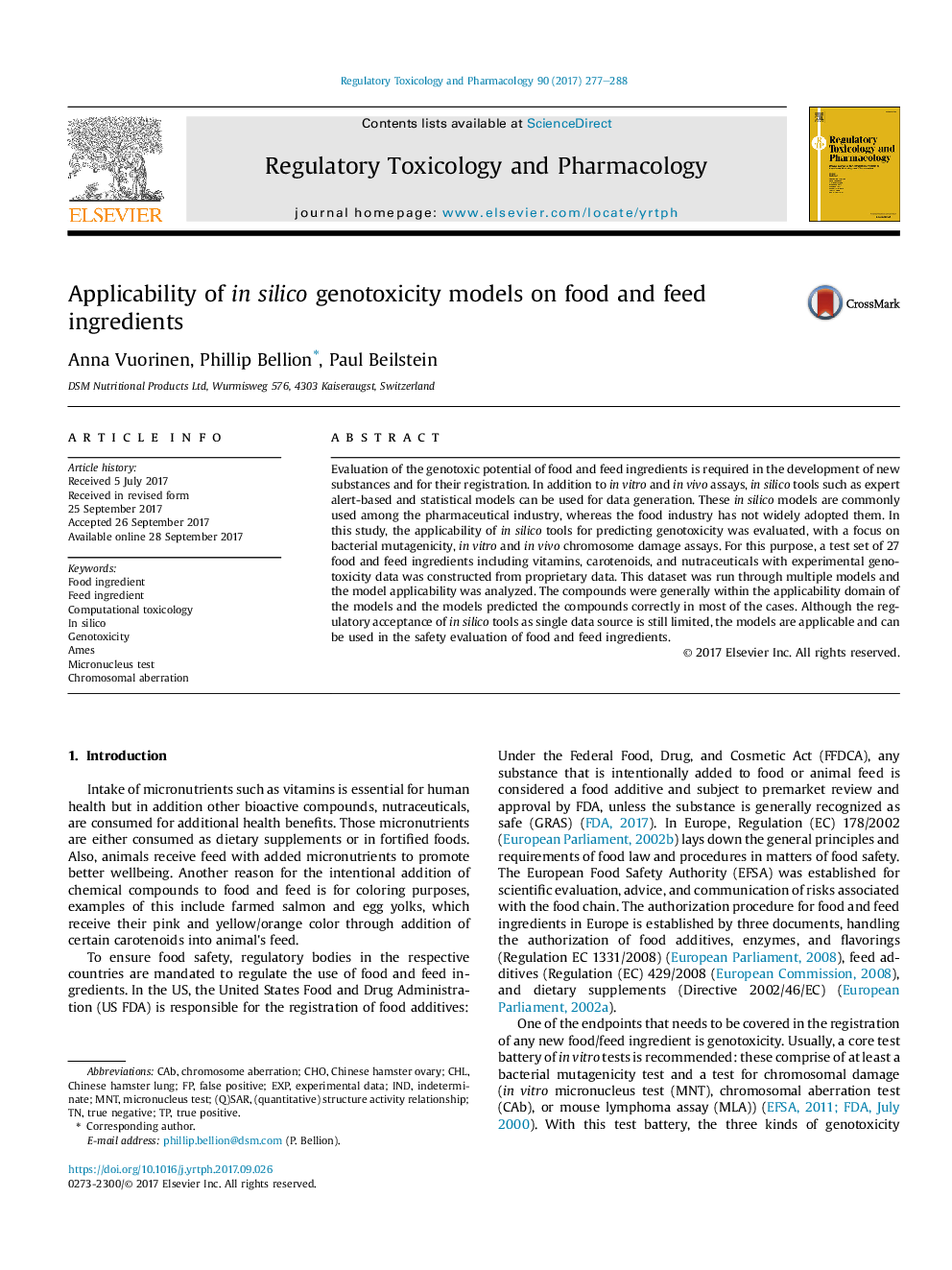| کد مقاله | کد نشریه | سال انتشار | مقاله انگلیسی | نسخه تمام متن |
|---|---|---|---|---|
| 5561112 | 1562113 | 2017 | 12 صفحه PDF | دانلود رایگان |
- Different In silico models predicting genotoxicity were evaluated against food ingredients.
- Food ingredients are well represented in the models' datasets.
- Models' coverage over the chemical space of food ingredients is good.
- In silico models are applicable to predict the genotoxicity of food ingredients.
- The tested models showed a good concordance to experimental data.
Evaluation of the genotoxic potential of food and feed ingredients is required in the development of new substances and for their registration. In addition to in vitro and in vivo assays, in silico tools such as expert alert-based and statistical models can be used for data generation. These in silico models are commonly used among the pharmaceutical industry, whereas the food industry has not widely adopted them. In this study, the applicability of in silico tools for predicting genotoxicity was evaluated, with a focus on bacterial mutagenicity, in vitro and in vivo chromosome damage assays. For this purpose, a test set of 27 food and feed ingredients including vitamins, carotenoids, and nutraceuticals with experimental genotoxicity data was constructed from proprietary data. This dataset was run through multiple models and the model applicability was analyzed. The compounds were generally within the applicability domain of the models and the models predicted the compounds correctly in most of the cases. Although the regulatory acceptance of in silico tools as single data source is still limited, the models are applicable and can be used in the safety evaluation of food and feed ingredients.
Journal: Regulatory Toxicology and Pharmacology - Volume 90, November 2017, Pages 277-288
